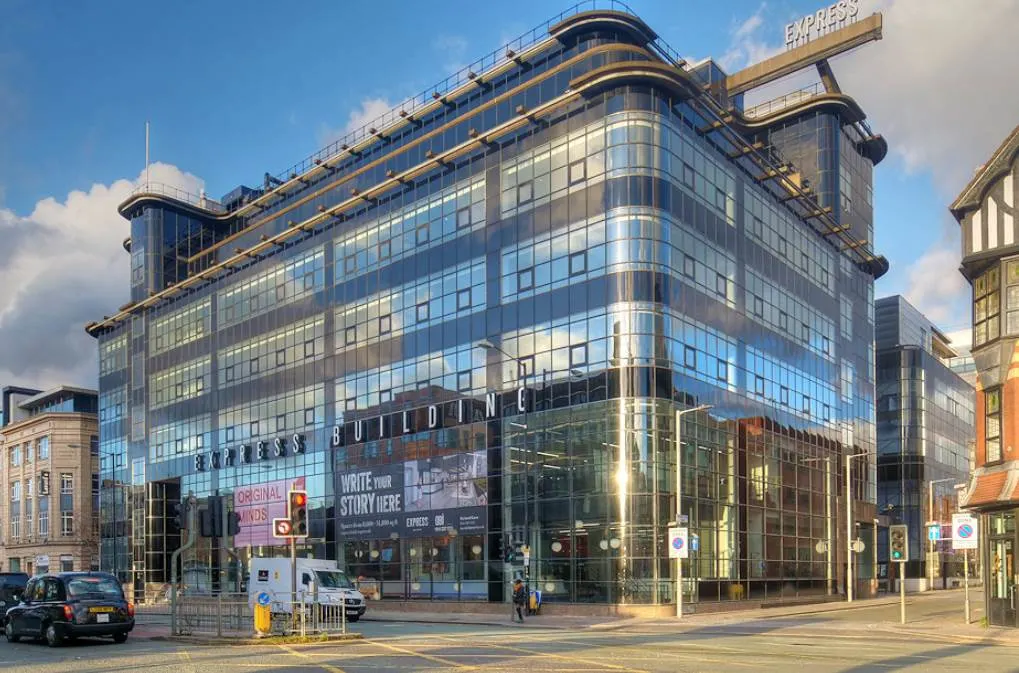Manchester has a history that dates back to shortly after the Roman Conquest of Britain in the 1st century A.D.
A Roman fort was established near the confluence of the Rivers Medlock and Irwell and the settlement was referred to as Mancunium.
The city didn’t boom like other cities in Britain during the Middle Ages and the metropolitan area didn’t expand until the Industrial Revolution in the 19th century.
Today, Greater Manchester is home to over 2.7 million inhabitants, the third-largest in the United Kingdom after London and Birmingham.
Let’s take a closer look at some of the most famous buildings in Manchester, structures that define the urban landscape of this city in North West England.
1. Manchester Town Hall
Manchester Town Hall is a Victorian-era building that was constructed between 1868 and 1877. This stunning Gothic Revival building was conceived as the ceremonial building of the Manchester City Council and houses several important government offices today.
The most important of all ceremonial rooms inside the building is referred to as the “Great Hall” and its walls are decorated with the so-called “Manchester Murals.” These twelve paintings by Ford Maddox Brown depict the story of the history of Manchester.
Official website: Manchester Town Hall
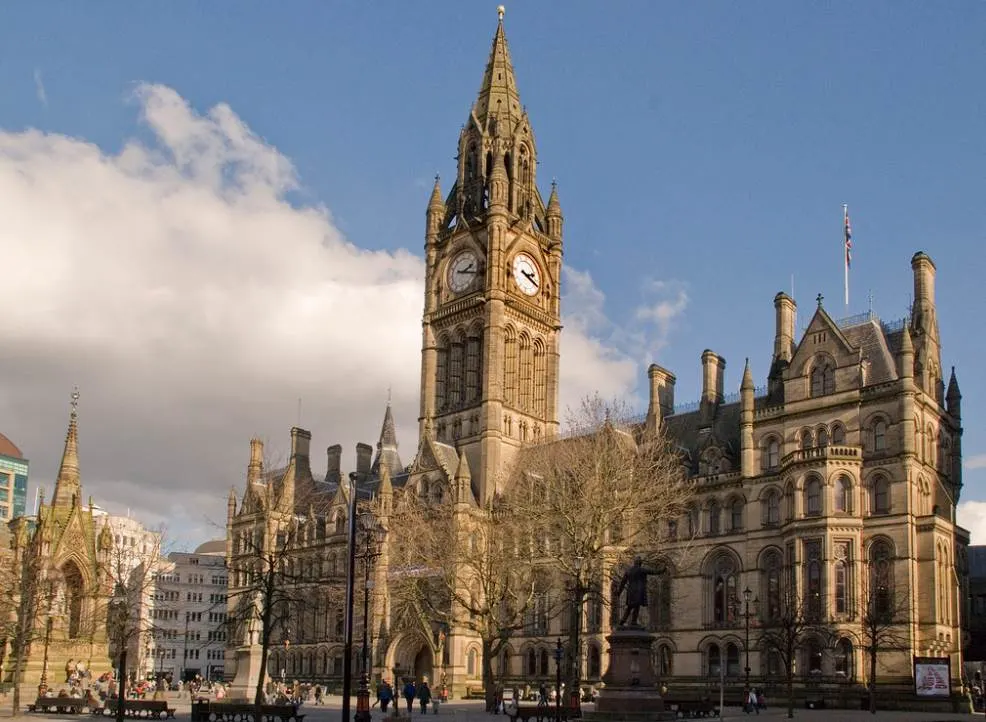
2. Beetham Tower
Beetham Tower is also known as the “Hilton Tower” and is a mixed-use skyscraper in Manchester. It’s located in the historical heart of the city and features both residential space and a hotel. The building was completed between 2004 and 2006 and stands 169 meters (554 feet) tall.

Manchester isn’t famous for its incredible skyline, although this is gradually changing as amazing skyscrapers are being constructed. Even though it was only completed in 2006 to a design by architect Ian Simpson, it was described as “the first proper skyscraper outside of London.”
Official website: Beetham Tower

3. Manchester Cathedral
Manchester Cathedral is an amazing Gothic Cathedral that is located in the heart of the city. It’s the seat of the Bishop of Manchester and the location where the first collegiate body of the parish was established in 1421. It replaced the former Parish church don’t his location.
The original church was completed in the Perpendicular Gothic style, the third and final style of English Gothic architecture. It was completely renovated and expanded during the Victorian era and finally completed as the magnificent building in Manchester that we can admire today in 1882.
Official website: Manchester Cathedral
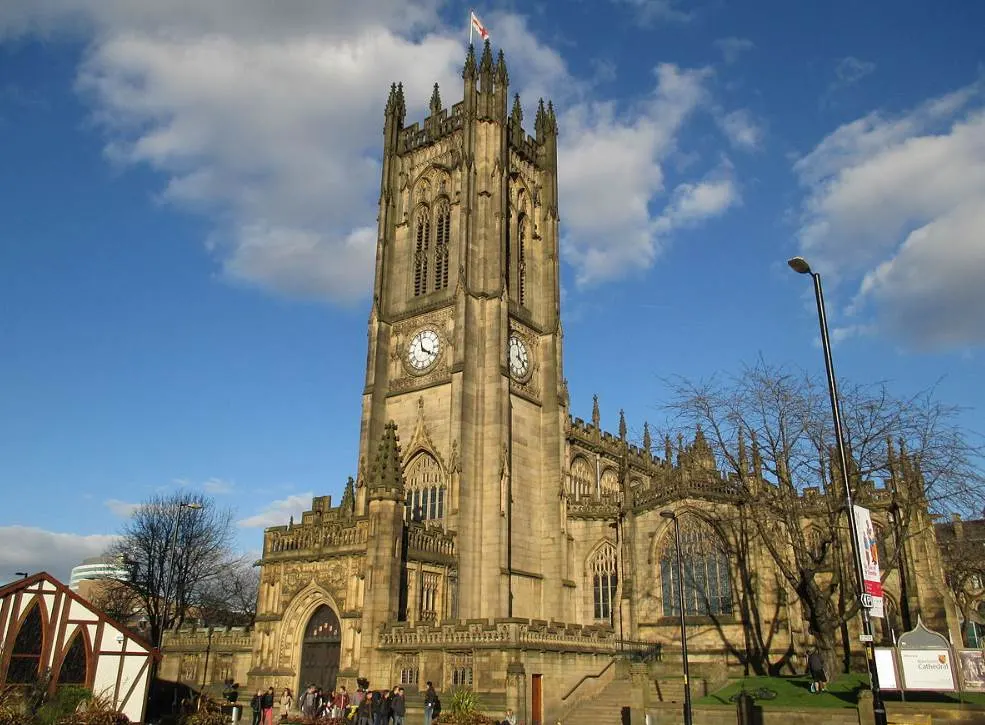
4. Imperial War Museum North
The Imperial War Museum North is commonly referred to as IMW North and is a museum housed in a stunning building in the Greater Manchester borough of Trafford. It’s one of five Imperial War Museums in England and the first that was opened in the north of England in 2002.
The building was designed by Polish-American architect Daniel Libeskind and has become one of the most fascinating landmarks in Manchester. It’s the epitome of Deconstructivist architecture, a style that makes the separate sections of the entire structure appear fragmented.
Official website: IMW North

5. Midland Hotel Manchester
Midland Hotel Manchester is often simply referred to as “The Midland” and is an amazing hotel in the city. It was constructed by the Midland Railway and completed in 1903. It was constructed to support the booming Manchester Central railway station, a former station that was established in 1880.
The opulent Baroque building is a prime example of Edwardian architecture, a type of neo-Baroque architecture that was popular in the early 20th century. It cost an incredible £1 million to build in the first decade of the 1900s, the equivalent of nearly £120 million today.
Official website: Midland Hotel Manchester

6. John Rylands Library
The John Rylands Research Institute and Library is another eo_gothic building that was constructed in the final years of the Victorian era between 1890 and 1899. It’s located on Deansgate, one of the major thoroughfares in the central part of Manchester.
The library opened its doors to the public in the year 1900. It was named after the husband of philanthropist Enriqueta Augustina Rylands, who dedicated it to her John Ryland. The interior of the building resembles a Gothic church. It holds the “Rylands Library Papyrus P52,” an artifact that is claimed to be the earliest extant text of the New Testament.
Official website: John Rylands Institute and Library
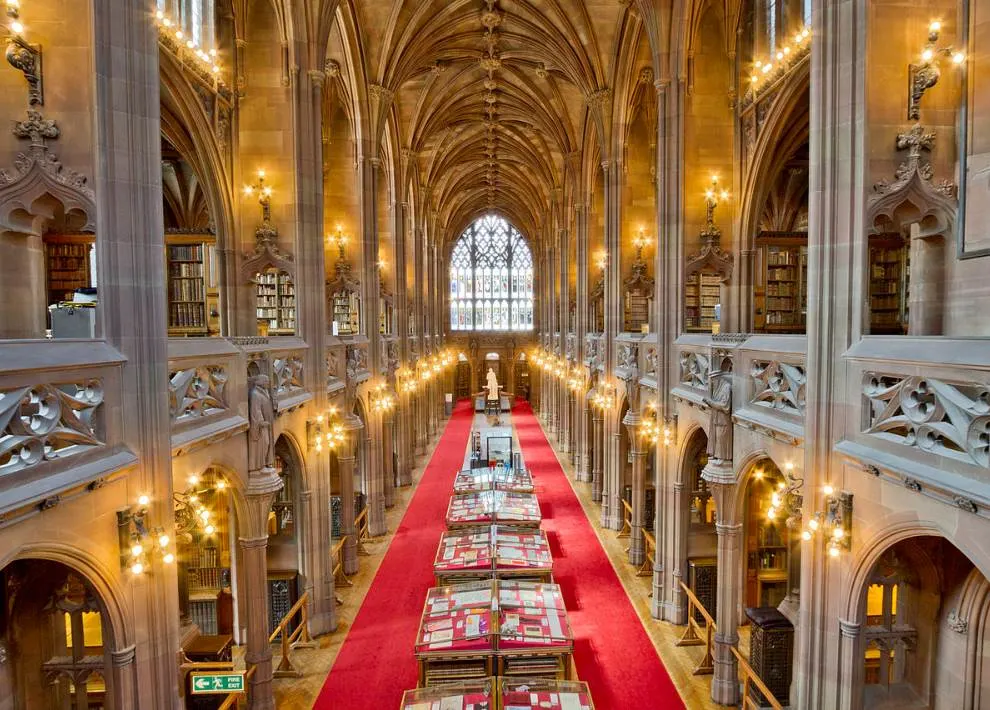
7. Manchester Central Library
Manchester Central Library is another iconic building in the heart of Manchester. It serves as the headquarters of the 24 public libraries in Greater Manchester and is housed in one of the most amazing Neoclassical buildings in the city.
The structure features a circular design with a domed rotunda that resembles the Pantheon, an ancient Roman temple in the heart of Rome. It was completed between 1930 and 1934 and has been one of the most iconic buildings in manchester ever since.
Official website: Manchester Central Library
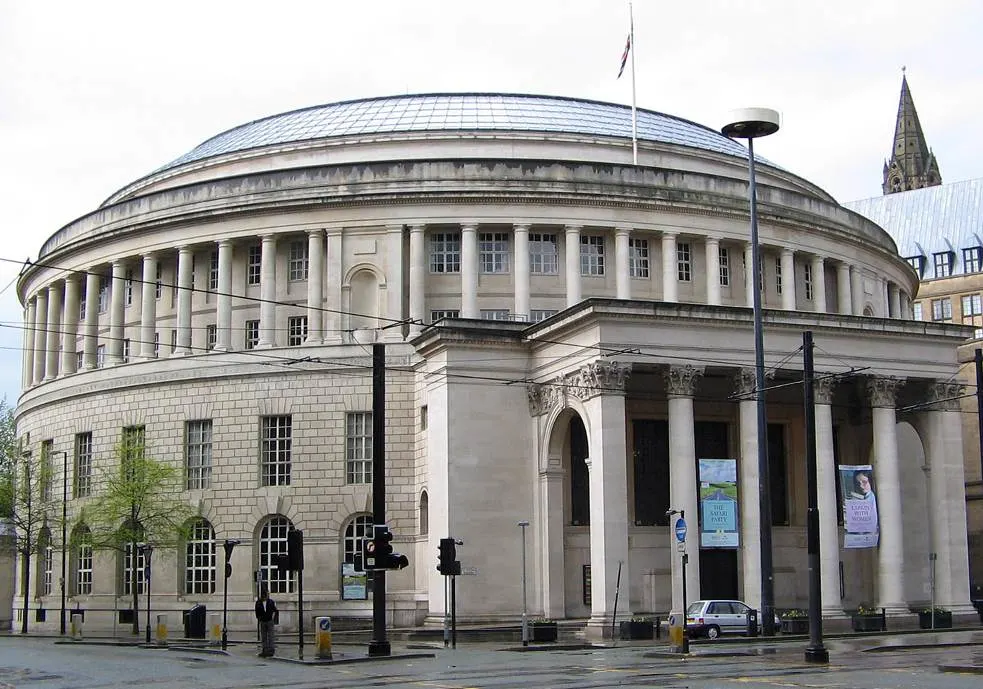
8. Victoria Baths
Victoria Baths is a Turkish bath facility that was constructed during the Edwardian era in the early 20th century. It’s located in the Chorlton-on-Medlock in the southeastern part of central Manchester. The building opened its doors in the year 1906 but ended up being closed by the local government in 1993.
It’s another very expensive building in Manchester because it cost £59,144 to construct. That’s the equivalent of well over £5 million today. Various restoration projects have been proposed in the past decades, but until now, the baths have remained close to the public except for some private events.
Official website: Victoria Baths
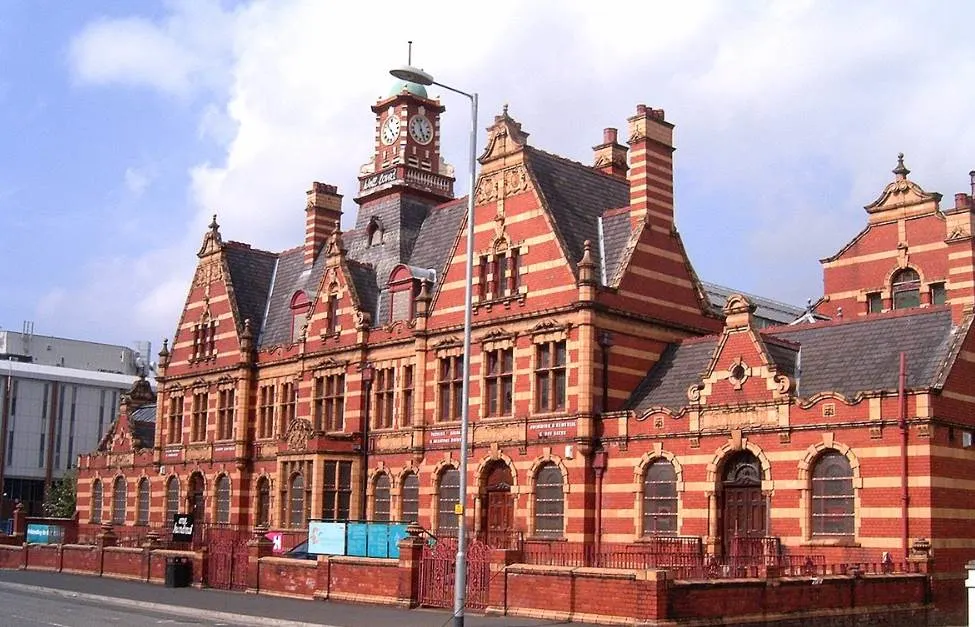
9. One Angel Square
One Angel Square is the magnificent centerpiece of the NOMA development project. This £800 million project is located in the Angel Meadows area just north of Manchester’s historical heart. The building was completed between 2010 and 2013 and mainly serves as an office building.
Although the building only stands 72.5 meters (237.8 feet) tall, it’s an amazing addition to the city’s skyline because of its amazing modern design. It also incorporates all the possible elements of sustainability, making it one of the most sustainable buildings in Europe.

10. Urbis Building
The Urbis Building is another remarkable building in Manchester that was designed by English architect Ian Simpson. It was one of the most fascinating additions in the early 21st century to an area near Exchange Square that is now referred to as the Millennium Quarter.
The building opened its doors in 2002 and initially served as the “Museum of the City.” The building closed its doors in 2010 and was completely rebranded a few years. Today, the Urbis Building is the home of the National Football Museum, a museum that displayed various important artifacts related to football.
Official website: National Football Museum

11. Daily Express Building
The Daily Express Building is one of the most amazing examples of Art Deco architecture in Manchester. It was commissioned to serve as a new office building for the Daily Express in the 1930s and served as the main venue for printing in North England until the late 1980s.
The building was designed by Sir Owen Wiliams, a renowned engineer who was the leading engineer of Old Wembley Stadium. It was the third building to be completed in 1939 with the building in London completed in 1931 and the building in Glasgow in 1937. The Streamline Moderne and futuristic Art Deco design make it one of the most stunning landmarks in Manchester.
Official website: Express Building
